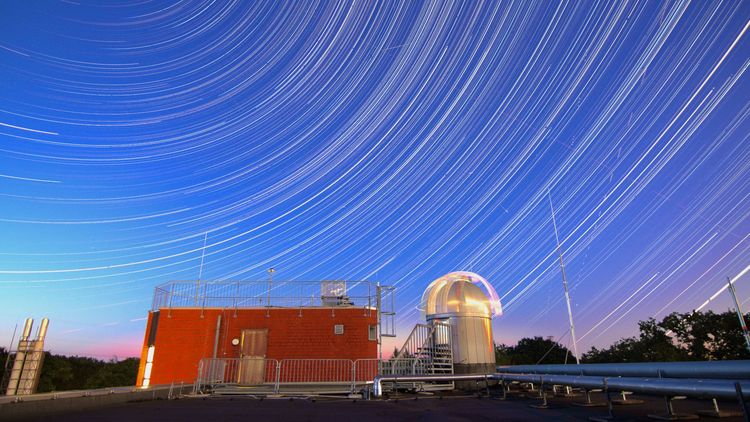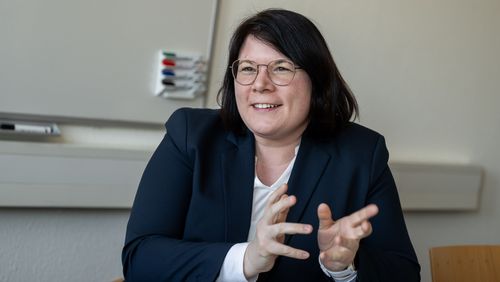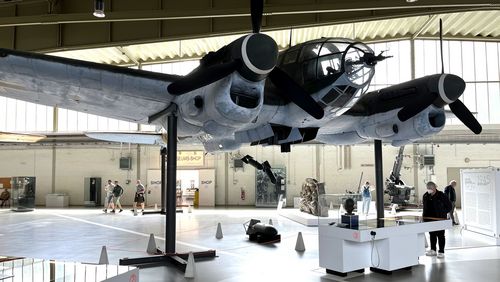A telescope on the roof of the physics building scans the sky for newly discovered near-Earth asteroids. Using a sophisticated automated observation system, the robotic instrument has already tracked down 15 new objects.
Before the frosty nights of January, the last time when conditions for observing the night sky were good was mid-October, Tobias Hoffmann recalls. In the dark, starry hours of the night of October 17th, no fewer than five new near-Earth asteroids entered the field of view of the University of Oldenburg's GHOST telescope. With a gentle whirring noise, the telescope got to work pointing its 40-centimetre mirror at different positions in the sky, one after another. Meanwhile, Hoffmann, a 23-year-old student of physics, was at home getting a good night's sleep, and was thus able to examine the results of the telescope's nocturnal activities alert and well-rested the next morning.
The GHOST telescope is the largest instrument at the University of Oldenburg's observatory. Mounted on the roof of Building W02, the physics building, and protected from the elements and scattered light by a rotatable aluminium dome, the telescope can zoom in on small sections of the whole sky. Just over a year ago, GHOST started working its way through a pre-determined observation schedule on cloud-free nights, its optics mainly targeting tiny dots of light that move around rapidly compared to the almost motionless stars and galaxies. The objects being tracked by the researchers in the university's Astrophysics and Space Environment Studies group are near-Earth asteroids that have only recently been discovered by larger telescopes.
Keeping an eye on potentially hazardous asteroids
In this way, GHOST contributes to the tracking of near-Earth objects (NEOs) that could potentially come dangerously close to our planet. "Every week, more than a hundred new objects are discovered during astronomical surveys," Hoffmann explains. But once detected, the existence, size and precise orbital data of suspect asteroids still has to be confirmed by other stations, after which those objects that could end up on a collision course with Earth are monitored by space agencies like NASA and ESA.
The problem, as Prof. Dr. Björn Poppe, head of the university's Division for Medical Radiation Physics and Space Environment explains, is that "there are not enough observatories available for follow-up observations after the initial discovery". The research group studies all things moving around rapidly in Earth's immediate vicinity, including elementary particles, dust particles, radiation – and asteroids. In principle, well-equipped amateur telescopes or smaller professional telescopes like the one at the university can be used for such follow-up observations. However, as Poppe points out, it can be quite a challenge to select one object that can be easily observed from one's own geographical location from a multitude of recently discovered objects.
Tobias Hoffmann presented a solution to this problem in his bachelor's thesis: he programmed an extension for a widely used, open-source astronomy software. His sophisticated programme, or observational "pipeline" system, selects suitable candidate objects from a list provided by the European Space Agency (ESA), calculates the optimum observation period for a given geographical location and then operates the telescope, ensuring that it os directed towards the corresponding area of the sky – all in a fully automated process. To automate GHOST, Hoffmann had to ensure among other things that the dome shutter automatically closes when it rains, so data from a rain sensor and a cloud camera are continuously fed into the control system.
Not much ‘space’ to spacewatch
"I spent quite a few nights up here in the freezing cold until it was all up and running," says Hoffmann, who is now doing his master's degree. Apart from the telescope's two-metre-long optical tube and mechanical controls, all that fits in the compact observatory is a stool and a small table with a computer. When the dome shutter is open the wind whistles right through the little room.
These days, however, Hoffmann and other users can control the telescope from the comfort of their own homes. Since its conversion to a robotic system, GHOST mainly tracks previously identified small objects in the solar system. In 2022 it performed 576 such observations, making it the most active telescope for follow-up observations in all northern Europe. On top of that it has already detected 15 new asteroids and comets. Among the five objects discovered on October 18th were two comets and an asteroid that had already been discovered in 2014 but then lost again due to the lack of follow-up observations.
The real advantage of Hoffmann's fully robotic planning, scheduling and observation pipeline is that since it is based on free, open-source and commercially available hardware and software components, it can also be used by other telescopes and observatories of a similar scale. "In this region alone, there are several instruments that are similar in size to ours. The idea is to tap into their unused capacities," says Hoffmann. He knows that his system is already being used elsewhere because of the enquiries that come in every now and again from all over the world.
Advancement award for bachelor thesis
The Centre of Applied Space Technology and Microgravity (ZARM) at the University of Bremen was also impressed with the results of Hoffmann's bachelor thesis: in December 2023, Hoffmann won the second prize in the institute's advancement awards competition "for special academic achievements in the fields of fluid mechanics, microgravity, space technology, space research and space-related environmental technology".
Hoffmann plans to focus on near-Earth asteroids in his master's thesis as well. To prepare for this next undertaking he has already completed an internship at ESA's Planetary Defence Office in Italy, which is tasked with observing near-Earth asteroids, assessing risks and initiating emergency measures in the event of an incident. He now has access to new data for his final paper – including data from larger telescopes.





